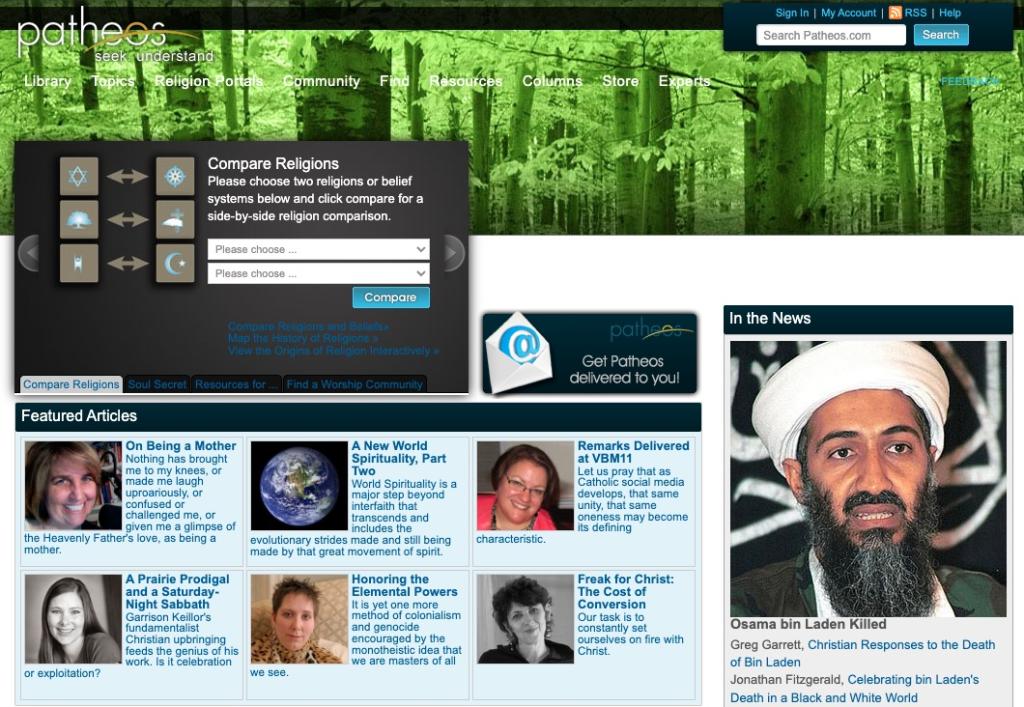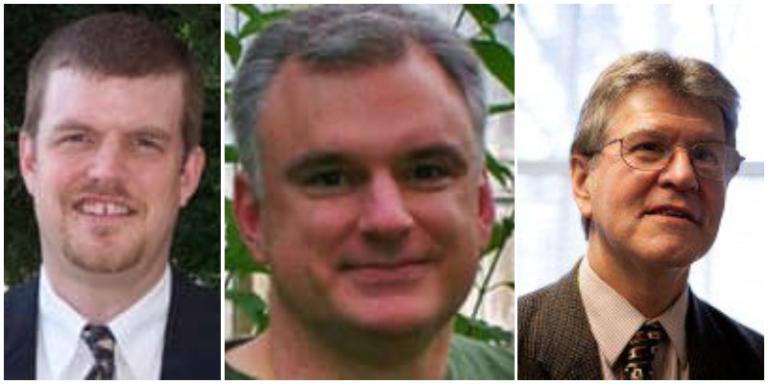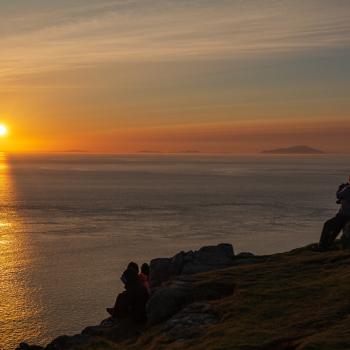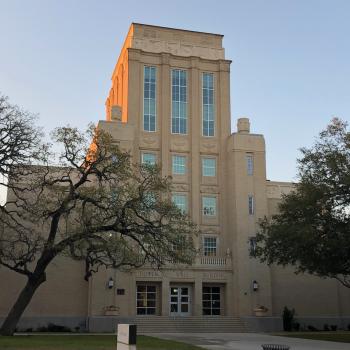On May 2, 2012, this blog debuted at Patheos.
Without any fanfare, Baylor professor Tommy Kidd opened our conversation by arguing that New York Times columnist Ross Douthat “underestimates how fractious the combination of religion and politics has always been in America.” Over the next seven days, future Brigham Young biographer John Turner wrote the first of many posts about Mormonism, the instantly eclectic Philip Jenkins touched on everything from greed to food, Was America Founded as a Christian Nation? author John Fea summarized Thomas Jefferson’s religious beliefs, and Kidd reported on a Methodist schism that had been averted postponed.
Ten years and nearly three thousand posts later, we would like to think that The Anxious Bench is still going strong — though “we” now consists of Philip Jenkins and nine historians who weren’t here in 2012. So to mark the anniversary, I’ve spent the last couple of weeks undertaking a kind of “oral” history of this blog, asking contributors past and present to share their recollections and reflections.
The rest of this month, we’ll tell the story of The Anxious Bench in our own words — the story of a decade that started and ended with Joe Biden holding high office, but otherwise featured remarkable changes in religion, politics, and culture. We’ll start at the beginning, with our origin story.

In May 2009 Time reported on the launch of a new website “that sets out to explain the differences among religions as well as illuminate the areas of common ground… so people can learn more about their own faith and explore others in a nonsectarian format.” Patheos was founded by Leo and Cathie Brunnick, who came from different Christian traditions and brought together children from previous marriages. Leo Brunnick, a former Marine officer and corporate executive, said they took inspiration from having to decide “what to teach [their children] and how and where to take them for Sunday school — we weren’t taking this lightly.” The library of religious history and beliefs they put together became the basis for Patheos, which soon added columnists from experts in different faith traditions, including Evangelical Christianity.
In its early years, the manager of Patheos’ Evangelical portal was Timothy Dalrymple, a pastor’s kid educated at Stanford, Princeton Seminary, and Harvard. “Patheos creates a marketplace of ideas,” he told Christianity Today in 2011, “and I believe that the gospel flourishes in that sort of marketplace.” (Dalrymple now serves as CEO of CT.) Moreover, he hoped that “a multifaith site” could also “host the conversations that are shaping the future of the church.”
Perhaps to that end, in 2012 Dalrymple approached two of his writers with the idea of starting a group history blog.
John Fea: Tim Dalrymple is to blame! Tommy Kidd and I were both writing individual columns for the religion website Patheos. My column was titled Confessing History. I can’t remember the name of Tommy’s column. [Ed. – “Faith in History.”] Dalrymple was our editor. At some point Patheos started to move away from individual columns and towards group blogs. He asked us to bring our columns together and then add some other authors.
John Turner: I knew Tommy and John Fea: Tommy from my graduate school days at Notre Dame and John from occasional encounters at conferences. I don’t remember how Tommy pitched the idea to me, but I thought of it as a chance to write about a variety of subjects that sometimes did and sometimes didn’t fit into my longer-term projects.
Philip Jenkins: I was very much a passive joiner here. I had recently joined Baylor as a full time faculty member, and was working quite closely with Tommy Kidd, who actually had the next office to me at one point. He asked me if I wanted to get involved, and I said “sure.”

JT: I had blogged at Religion in American History, launched by Paul Harvey (and probably others whose names I am unconscionably forgetting). While I liked and like the idea of blogging for its relative lack of constraints, my main attraction was the chance to do something in collaboration with Tommy, John, and Philip. So much of my career has been solo things. I love initiatives that involve collaboration.
JF: I was blogging at The Way of Improvement Leads Home (and before that at Religion in American History) and writing the column at Patheos, so I was familiar with this kind of popular writing. I thought I would save my opinion or longer-form historical pieces for The Anxious Bench.
PJ: I had not blogged before, as such, but I had a real lot of experience with journalism and column writing, broadly defined. Back in the 1990s, I was writing a lot for the magazine Chronicles, which gave me superb training in writing for a non-academic public, and learning to de-academicize (!) my writing. In the Oughts, I was writing regularly for Books and Culture, Christian Century, and several others, and in the Teens I wrote for American Conservative, Aleteia, and Real Clear Religion. Those columns generally ran at around 800-1000 words, which was exactly what I needed for Anxious Bench.
JF: The name was Tommy’s idea. I don’t think we put too much thought into it… Tim Dalrymple wanted something more catchy and less generic [than Faith in History]. [Ed. – incidentally, Patheos also hosted a Catholic blog called “The Deacon’s Bench,” which has been defunct since 2019.]
JT: The original banner heading for the blog, or at least what I remember as the original, featured an illustration of George Whitefield with his hands raised, not Charles Finney, with whom the “anxious bench” is associated.

PJ: “The Anxious Bench” goes back to mid-nineteenth century revivalism, Charles Finney etc., and the specific title comes from this book… One significant point is that the term was historical evangelical-speak, which reflected the group’s focus at that point.
In September 2012, the group expanded to include a couple then teaching at Gordon College: Thomas Albert (Tal) Howard, who brought more expertise in European history, and Agnes Howard, a historian of New England and its Puritan settlers.
Agnes Howard: My husband Tal and I were at his parents’ house in Alabama, sitting on the porch enjoying morning sunshine, when we read an email query from Tommy Kidd inviting us to be part of the project. We knew and appreciated Tommy’s work, so signed on.
JF: I was part of the conversation in recruiting Agnes and Tal Howard… But my memory is vague. I know we were committed from the start to finding a female writer to join us.
Over time, Patheos itself has changed, and in 2016 it was purchased by its early rival, the evangelical-owned Beliefnet — an acquisition that caused some non-Christian bloggers to leave. Anxious Bench has remained with Patheos, but the blog had the opportunity to move to a different platform before the first year was out.
JF: In November 2012, the journal First Things wanted to bring The Anxious Bench to its website. We (me and Tommy) turned down the offer. I can’t speak for Tommy here, but I was concerned that a move to First Things might pigeonhole the blog ideologically and politically.
A few months later, Fea himself decided to leave Anxious Bench. “I have enjoyed blogging with you guys these past months,” he wrote Dalrymple and Kidd in late February 2013, “but I have found that I just don’t have the time or creative energy anymore to come up with new material each week.” Instead, he refocused his energies on the personal blog he had started in 2008, The Way of Improvement Leads Home, which eventually became a centerpiece of the online magazine Current.
To replace Fea, Kidd recruited two other American religious historians: Miles Mullin, a professor at Southwestern Baptist Theological Seminary, and David Swartz, a Notre Dame PhD (like Kidd and Turner) on the faculty of Asbury College. Both wrote their first posts in May 2013 — about death and dying! — just after the blog’s first anniversary.
David Swartz: I joined just after the publication of my first book, Moral Minority, a history of the evangelical left from the 1940s through the 1990s. Tommy Kidd invited me, explicitly asking me to write about non-rightist contemporary evangelicals as a way of balancing out the abundance of posts on early America (Tommy and John Fea), more conservative evangelicals and Mormonism (John Turner and Agnes Howard), and European history (Philip Jenkins and Tal Howard).
Miles Mullin: I first started writing for Anxious Bench as a guest poster during the 2012-13 academic year when I taught at the seminary. My posts were well-received, so shortly after that, Tommy Kidd, who was the editor at the time, invited me to join as a regular bi-weekly contributor and I was happy to accept. My own area of expertise was twentieth-century evangelicalism, so I was a good fit for the audience that Tommy was trying to cultivate.
That lineup remained stable for over two more years, until 2015-2016 brought a series of personnel changes that ended up reshaping The Anxious Bench, even as it continued to explore “the relevance of religious history for today.” That’s where I’ll pick up the story next week!













